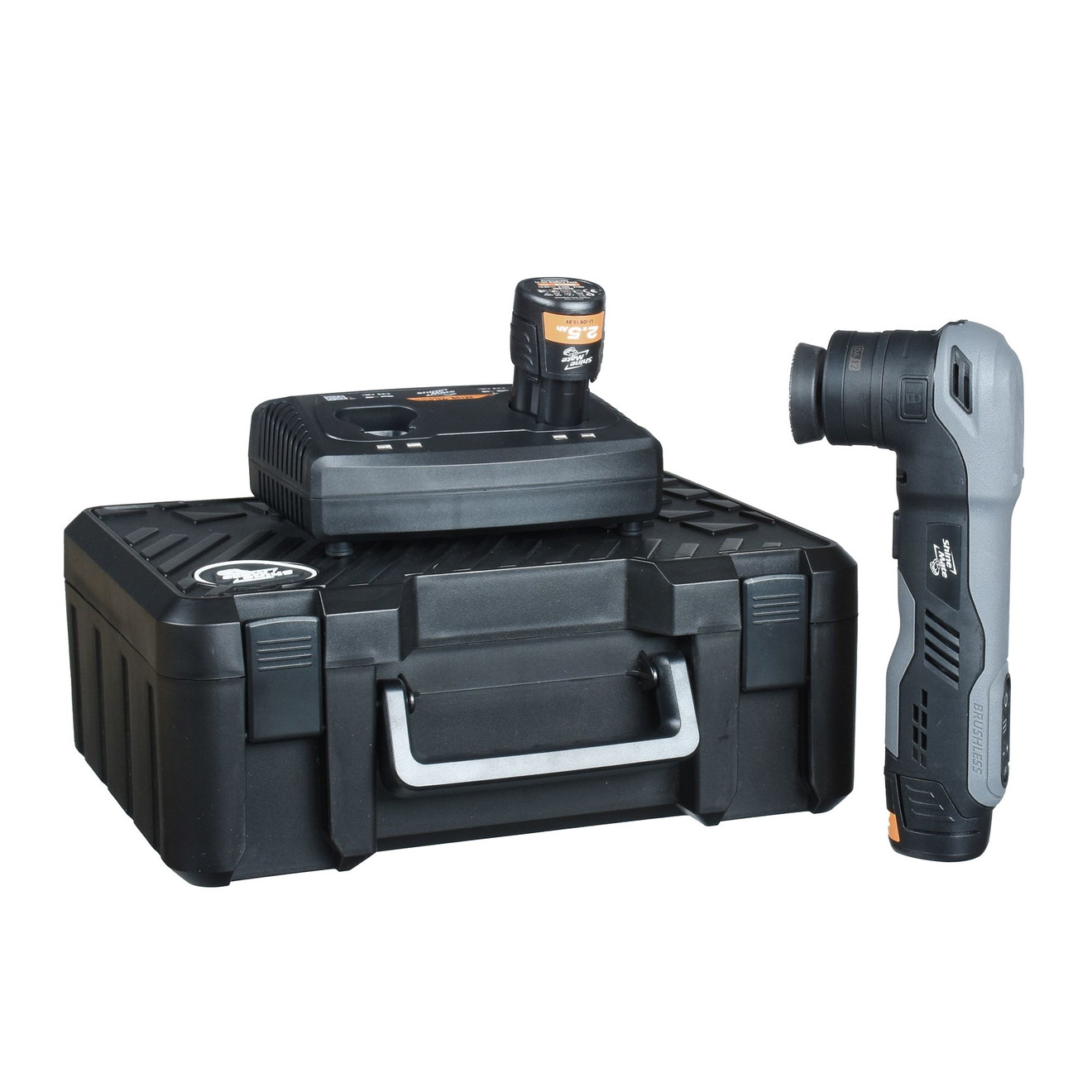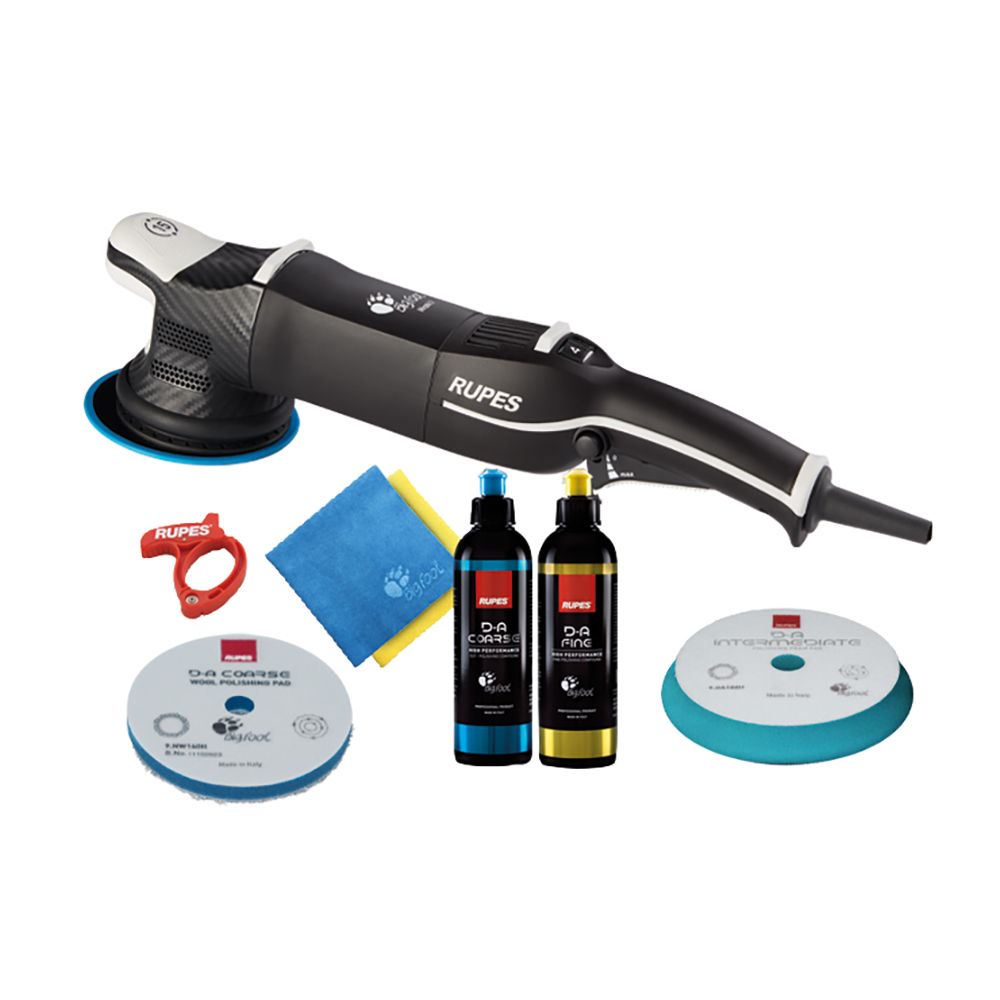Dual Action Polisher: Advantages, Disadvantages, and Differences
When it comes to paint correction and defect removal, a distinction is made between rotary and dual action (DA) polishers. Since around 2010, DA polishers have revolutionized the market. Thanks to the Italian manufacturer Rupes, so-called long-throw dual action polishers have become an undeniable success. Even beginners can achieve excellent polishing results with a DA polisher. Due to their unique movement, DA polishers are hologram-free, do not generate excessive heat, and are easy to maneuver over the paint surface. DA polishers are also referred to as orbital polishers or multi-action polishers. Currently, the leading manufacturers of DA polishers include Rupes, Flex, Makita, Festool, and the Asian brand ShineMate.
Dual Action Polisher vs. Rotary Polisher
Rotary polishers rotate exclusively around the central axis of the backing plate. Dual action (DA) polishers, on the other hand, combine a circular motion with a rotational movement, creating a dual action effect. With the same backing plate size, the treated surface area is larger with a DA polisher. The rotational movement results in an oscillation of the backing plate in all directions, known as the throw. This movement closely resembles manual hand polishing. Thanks to the dual action of circular and rotational motion, the polishing result is more uniform and free of holograms. DA polishers remove less material compared to rotary polishers since they work more gradually on a specific paint area. However, with modern polishing compounds, polishing pads, and polishers with larger throws, DA polishing has become increasingly efficient.
5 Disadvantages of a Dual Action Polisher
- Less material removal, leading to longer polishing times for deep defects
- Increased strain on wrists due to the oscillating movement
- Generally more expensive than rotary polishers due to more complex mechanics
- Challenging to maneuver in tight areas
- Often louder due to gearbox noise
5 Advantages of a Dual Action Polisher
- Very beginner-friendly
- Safe defect correction with excellent results
- Low-heat polishing that minimizes stress on vehicle components and paint
- No risk of slipping on edges due to its movement pattern
- Wide range of battery-powered and corded DA polishers available
Types of Dual Action Polishers
DA polishers can be categorized into free-spinning dual action polishers and forced rotation dual action polishers. Free-spinning DA polishers generate rotation solely through the orbital movement, whereas forced rotation polishers have a specialized gear system that ensures continuous rotation. The throw is usually smaller in forced rotation polishers, but they achieve higher material removal due to the forced motion. When combined with highly abrasive polishing pads and compounds, forced rotation polishers can quickly remove deep paint defects. Rupes offers a powerful forced rotation polisher with the Rupes LK900 Mille, while the German manufacturer Flex has already introduced the second generation of the XCE 8-10. Forced rotation polishers are particularly popular in car dealerships and for lease return detailing.
Leading Dual Action Polishers on the Market
- Rupes LHR 15 Mark III - free-spinning
- FLEX XFE 7-15 - free-spinning
- Rupes LHR12E Duetto - free-spinning
- FLEX PXE 80 Cordless Polisher - free-spinning
- ShineMate EBR 351 Cordless Polisher - free-spinning
- FLEX XCE 8-12 - forced rotation
Perfectly Matched Polishing Compounds for Dual Action Polishers
Renowned manufacturers of polishing compounds offer specially formulated products for dual action polishers, including Koch Chemie, 3D CarCare, Meguiar's, and Sonax. Choosing the right polish should be done with expert consultation from specialized retailers. As a supplier of polishers and matching compounds, we offer independent advice and cost-effective workshops for paint polishing.
Scientific Comparison of Polishing Machine Performance
A recent video provides the first scientifically backed comparison of various polishing machines' performance metrics. The test covers models from manufacturers like Rupes, Flex, Dynabrade, and ShineMate. Standardized testing methods objectively measure parameters such as speed stability under load, vibration behavior, and material removal rate. This approach helps users select the best polisher for their specific needs and make well-informed purchasing decisions.
Average rating of 4.9 out of 5 stars
Average rating of 5 out of 5 stars
Average rating of 4.9 out of 5 stars






